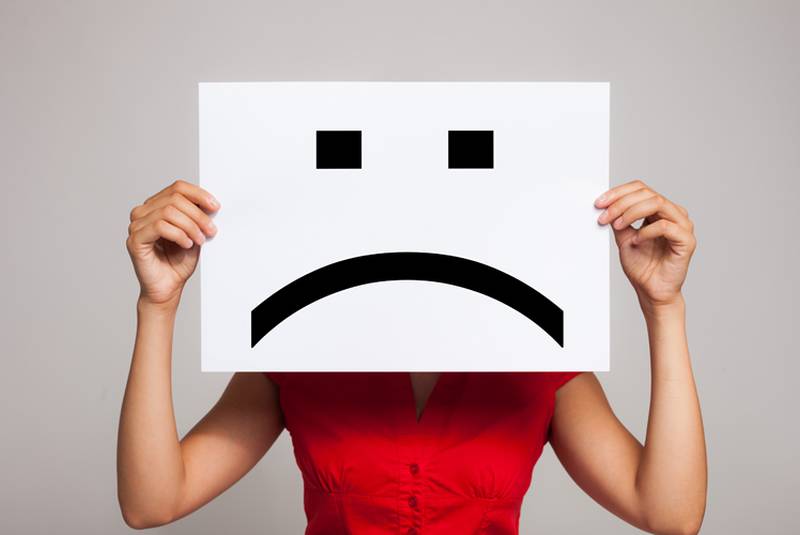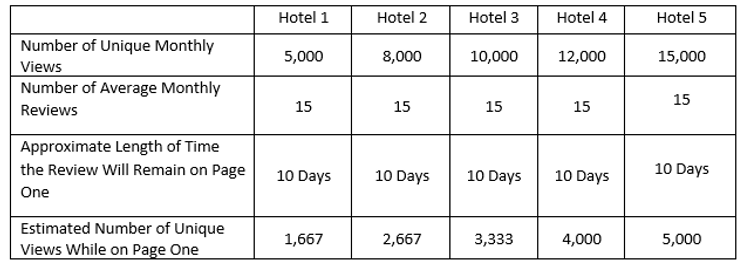
From a lukewarm shower to a longer than usual check-in line, even small service issues can cause a guest’s experience to fall short of expectation and result in a one- or two-star review.
NB: This is an article from Reputation Lab
While we all know that this can have a negative impact on our future business, have you ever taken the time to really consider the shelf life of a low rated review?
How Long Will a Negative Review Remain on Page One?
Let’s assume your hotel receives a one-star TripAdvisor review. If your property is averaging 15 reviews a month on the site, this equates to one review every other day. Since TripAdvisor displays five reviews per page starting with the most recent, this low-rated review will likely sit front-and-center on page one for ten days, perhaps a few days less if your hotel is using the “Favorite Review” option.
For this example, let’s say that your TripAdvisor page has 8,000 unique monthly page views. Based on this assumption, you can expect to have 2,600 and 2,800 visitors during the ten-day time-frame that this one-star review occupies a position on page one. (If your hotel subscribes to Business Advantage, we recommend taking a peek at the Analytics Suite to find your monthly traffic count.)
The Shelf Life of a Review on Page One of TripAdvisor:

However, the damage isn’t just limited to these ten days, because unlike spoiled milk, this low rated review never gets taken off the shelf. Consumers read on average 6-12 reviews before making their decision and are therefore likely to click through to page two and read some, if not all, of these reviews as well, while other consumers sort their filters to read only negative reviews which means the content of your most recent negative review may have added exposure.
If your hotel only receives one low rated review every month or two, this review will shift to page three in about 20 days where shoppers will be less likely to read it. However, if you are receiving two or more low rated reviews per month, this can result in a low-rated review being featured on your front page nearly every day of the month.
How Long Will a Low Rated Review Impact Your Ratings?
Regardless of which page the review sits on, its low rated score can take a long-lasting toll on your ratings. While it is easy to feel as if a positive review should negate a negative review, the reality is that a one-star review and a five-star review average to a three-star rating, much lower than the review score most hotels strive to maintain.
So, how many five-star reviews will it take to restore your original rating? Let’s look at how a one-star review will impact hotels based on their original ratings:
The Impact of a One-Star Review Based on TripAdvisor Ratings:

You can see that to recover a rating of 4.4, the property would need to bring in six additional five-star reviews, about a 40% increase in review volume for the month, something that most hotels would be challenged to do on a moment’s notice.
How to Lessen the Impact of a Negative Review?
Every hotel will receive a negative review now and then, and by implementing a strategy to increase your monthly review volume, you can provide your business the bandwidth needed to better withstand the impact of a low rated review.
Consider how an additional one-star review will affect hotels with a 4.4 average rating based on the number of reviews they receive each month:
The Impact of a One-Star Review Based on TripAdvisor Review Volume:

By just increasing review volume from 5 reviews to 15 reviews a month, a business can drastically reduce the amount of time this negative review sits on page one of TripAdvisor and maintain a higher average rating after factoring in a surprise one-star review. For hotels averaging 45 reviews a month, receiving a one-star review will result in less than a .1 point drop in ratings, and the review will move onto page two in under three and a half days.
Our above scenarios assume a hotel which earns a high Average Review Score (4.4), which means that negative reviews happen for this hotel few and far between. The lower the average review score goes, the likelihood of more negative reviews increases, while the impact of that negative review starts to decrease.
Beyond TripAdvisor:
While we have focused these examples on the impact that a low rated review will have on your TripAdvisor page, this scenario plays out on other sites as well, often at the same time.
If your TripAdvisor page is receiving 45 reviews a month, you may be able to quickly move a low rated review onto page three or four and recover your average rating. However, if the same guest, or even another, posts on your Yelp page where your hotel is only receiving five reviews a month, this negative review will sit conspicuously on page one of the chronological sort for four months, as Yelp displays 20 reviews per page!
Google is quickly becoming one of the most popular review sites for local businesses. However, they manage their reviews very differently than both TripAdvisor or Yelp, listing all reviews on one page and allowing the reader to scroll through a long list of past review. The site also aggregates reviews from a variety of channels, including TripAdvisor and many OTAs, showcasing their scores side by side, making a consistent reputation management strategy across all site more important than ever.
Your Next Steps:
We have seen how increasing your review volume can dramatically benefit your business and lessen the negative impact of a low rated review. Growing your review volume can be as simple as asking your guests to share their feedback, and there are many tools available to assist, such as TripAdvisor’s Review Express, which drive guests to one site, or business cards which can be designed to promote growth on several sites. Additionally, there are other tactics, such as providing management responses to online reviews, that have been proven to boost both review volume and ratings.
What are you doing at your hotel to proactively increase your review volume and maintain your online reputation despite an occasional low rated review?



